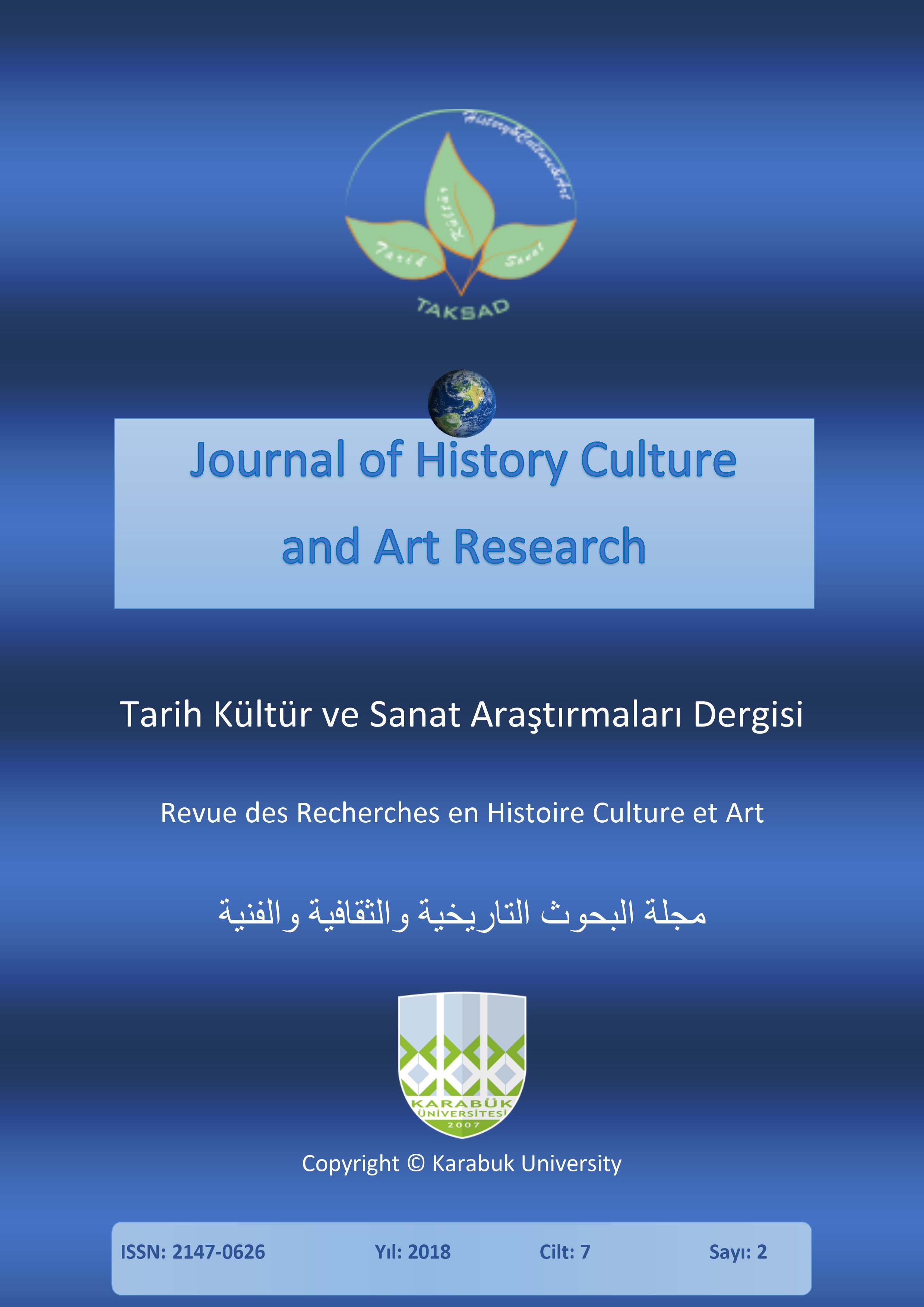The Role of Language Representation of the Time Model in the Process of Meaning Creation
DOI:
https://doi.org/10.7596/taksad.v7i2.1586Keywords:
Relational picture of the world model framing, Cyclic time model, Linear time model, Temporal nominators in the class of German nouns.Abstract
The aim of the article is to demonstrate the language picture of the world, which owes its structural integrity to its relational framework. The archetype “time” is central to the Christian mythology, in fairy tales and other linguocultural artefacts. The thought-language essences representing the category TIME in the modern German language, connect different time modes (past, present, future), allowing to distinguish different worlds. The memory of the ways of the development of the human soul is concentrated in them. The analysis is carried out on the material of propositional structures of substantive derivatives, representing the category TIME in modern German. In particular, the article illustrates the process of modelling knowledge of the category TIME when coupled with the ability to establish relationships between an individual unit of measure as a part and its component as an integral (PART – WHOLE), and between integrity and individuality (INTEGRAL – PART). The nouns generated on the basis of the WHOLE – PART structure are profiled by the ʽdurationʼ attribute, correlated with a certain length of time. Cognitively selected in the structure of the PART – WHOLE is a certain period of time. The propositional structure TIME –SITUATION characterizes time as a duration limited by the framework of existence of a certain state. Moreover, time correlated with certain events can profile the sign of ʽextensibilityʼ, objectified by terms of length. In the composition of the cognitive structure of the derived substance, a concept representing a TIME or a SITUATION and a concept modelling spatial relations can interact. The corresponding fragment / event on the linear time axis is cognitively highlighted in the conceptual structure of such a name. Thus, the use of the modelling technique creates a demonstrative basis for the fact that the language representation of the refraction of the world picture through the prism of the time model allows us to learn not only the processes of meaningfulness, but also to reveal the secret of the meaning of existence being unique to each person.
References
Alefirenko, N. F. (2010). Cultural Linguistics. Value and notional language space. Moscow: Flinta.
Belyaev, I. A. (2011). Human integrity in the aspect of the relationship of his abilities and needs: experience typology: Doctoral dissertation. Chelyabinsk.
Buber, M. (1998). The problem of man. Kiev: Nika-Center.
Duden (1996). Duden German universal dictionary. Mannheim: Dudenverlag.
Fichte, J. G. (1976). The dignity of man. Leipzig: Reclamjum.
Heidegger, M. (1986). Time of worldview. New technocratic wave in the West / ed. by P. S. Gurevich. Moscow: Progress.
Hoffmann, E. T. A. (2012). The Golden Pot. Die Suhrkamp BasisBibliothek.
Hoffmann, E. T. A. (n.d.). A New Year’s Eve Adventure [Electronic resource]. URL: http://originalbook.ru/a-new-year-s-eve-adventure-e-t-a-hoffmann-english/
Kant, I. (1966). Works in 6 volumes / ed. by V.F. Asmus, A.V. Guliga, T.I. Oizerman. Series Philosophical heritage. Vol. 6. Moscow: Mysl.
Khudyakov, A. A. (1999). Conceptual categories as an object of linguistic research. In: Aspects of linguistic and methodological research / ed. by N.V. Chicherina & T.A. Klepikova. Arkhangelsk.
Kubryakova, E. S. (et al.) (1996). Concise dictionary of cognitive terms. Moscow: Moscow State University.
Leontiev, A. N. (1983). Selected works on psychology. Moscow: Pedagogika.
Losev, A. F. (1994). Myth. Number. Essence. Moscow: Mysl.
Losev, A. F. (2000). The history of ancient aesthetics (in 8 volumes). Vol. 4. Aristotle and the late classics. Moscow: Folio, AST.
Voronina, L. V. (2013). Representation of the sense “a part of whole” and “part-whole” by means of German word-formation. Pushkin Vestnik of Leningrad State University, Vol. 1, Issue 3, pp. 151-158.
Vorotnikov, Yu. L. (2006). Linguistic worldview: term interpretation. Knowledge. Comprehension. Ability, Issue 2, pp. 88-90.
Wahrig, G. (2001). German dictionary. Gütersloh, München: Bertelsmann Lexikon Verlag.
Windelband, V. (1995). Selected works. The spirit and history. Moscow: Yurist.
Wittgenstein, L. (1994). Philosophical works. (Part 1). Moscow: Gnozis.
Wundt, V. (2001). Introduction to Philosophy / ed. by A.L. Subbotin. Moscow: CheRo, Dobrosvet.
Downloads
Published
How to Cite
Issue
Section
License
All papers licensed under Creative Commons 4.0 CC-BY.- Share — copy and redistribute the material in any medium or format
- Adapt — remix, transform, and build upon the material for any purpose, even commercially.
Under the following terms:
Attribution — You must give appropriate credit, provide a link to the license, and indicate if changes were made. You may do so in any reasonable manner, but not in any way that suggests the licensor endorses you or your use.
- No additional restrictions — You may not apply legal terms or technological measures that legally restrict others from doing anything the license permits.







